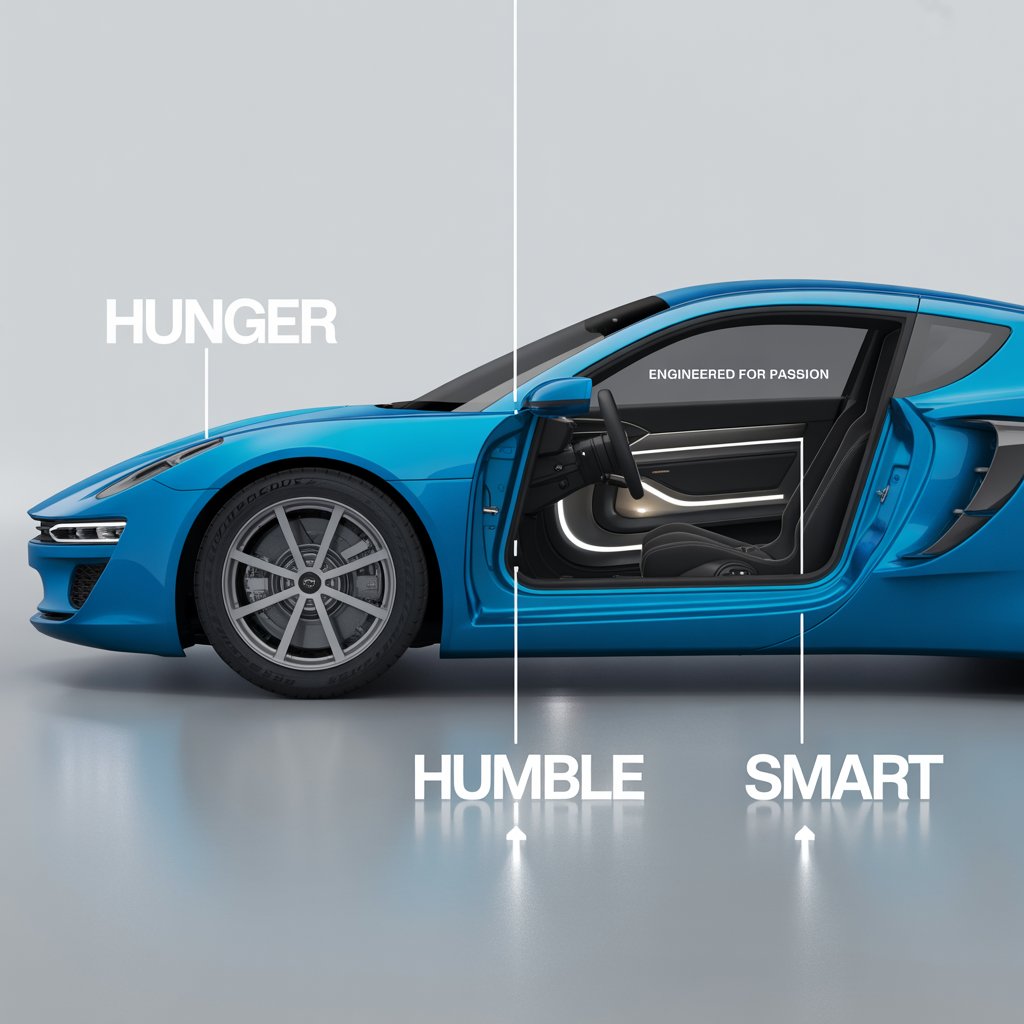
Over the last year or two, I’ve had the opportunity to write about Patrick Lencioni’s work and its relevance to a Business Operating System. Today, and over the next few weeks, I’m going to focus on the other aspect of his writing that really drives (yes, pun intended) an organization and an individual.
I’ve worked with a lot of teams over the years, some that purred like a finely tuned engine and others that rattled along, barely making it to the next pit stop. Through those experiences, I’ve learned that what makes a team great isn’t just talent or process, but something more profound. Patrick Lencioni’s framework of the Three Virtues of an Ideal Team Player – Humble, Hungry, and Smart – hits the nail on the head for me.
I’ve already written about humility in the article Leading with Less Ego: The Strategic Strength of Humility, so I won’t repeat myself here. Instead, I want to share why the other two virtues, Hungry and Smart, also resonate so strongly with me, and why I think they’re just as critical.
And since I’m a car guy, let’s take this one for a drive.
Hunger: The Engine That Keeps Pulling
When I think of someone who’s “hungry,” I picture the engine under the hood. It’s what gives a car its power, its ability to move forward. Without it, the wheels don’t turn, no matter how polished the exterior looks.
In my own work, I’ve seen teams and individuals with plenty of “shiny paint” – good branding, decent processes, the appearance of progress. But when you lift the hood, the engine just isn’t there (or it’s a two-cylinder). The team (or individual) does the bare minimum, checks boxes, but doesn’t push harder or look for ways to improve. They idle. Ever heard of the phrase “lipstick on a pig”? It might look good; charismatic, skilled, seemingly in-tune and agreeable to hard work and success, but when the rubber hits the road, they’re long gone. I’ve known a few very talented colleagues who fit this definition.
The hungry team player, on the other hand, is like a turbocharged V-8 motor (and yes, I’ve been very fortunate to own one). They’re always looking for the next opportunity, the next problem to solve. They’ve got fuel in the tank and a willingness to press the accelerator. One example that comes to mind was a colleague I worked with early in my career. No one asked her to go beyond her role, but she did anyway – always tinkering, constantly experimenting with better ways of working. She set the tone, and the rest of us followed. Suddenly, the whole team felt like it had more horsepower.
Being hungry is about that extra pull. It’s the drive that keeps a team from stalling on the side of the road.
Smart: View from the Cockpit – Steering and the Dashboard
If hunger is the engine, then “smart” is the steering and dashboard. It doesn’t matter how much horsepower you’ve got; if you can’t steer properly or understand what the indicators are telling you, you’ll end up in the ditch.
Lencioni makes the point that “smart” isn’t about book smarts, it’s about people smarts. It’s the ability to read the road conditions: the bumps, the curves, the unexpected obstacles. It’s about how you interact with others, how you sense what’s going on around you (like reading road signs and understanding their meanings), and how you adjust so the team stays aligned and moving smoothly.
I’ve been in projects where the horsepower was there, plenty of hungry people revving their engines, but the steering was off. Misunderstandings, poor communication, and egos fighting for the wheel led to wasted effort. The car had power, but it wobbled all over the road. Only when the team started listening and really tuning in to each other did the ride become smoother.
Being smart in this sense isn’t flashy. It’s subtle, like all the safety features. You don’t always notice them, but they come in handy when you’re in trouble. It’s what keeps a team balanced, steady, and able to handle whatever hazard comes next.
Why This Resonates With Me
I think these virtues resonate so much because they line up with what I’ve seen, time and again, in both business and life:
- A car with no engine doesn’t move. A team without hunger doesn’t grow or learn.
- A car with no steering or awareness of the surroundings is dangerous. A team without people smarts goes in circles, or worse, backwards.
- And without humility, well, you can have the best car in the world, but if you don’t look after it, ensure the suspension, chassis, and body are all in good shape, it won’t end well. A team without humility breaks apart.
For me, these three together are the complete package. They explain why some teams get stuck and why others achieve more than anyone expected.
What’s Next
I’ve already covered humility in detail in my earlier post. Over the next few weeks, I’ll be diving into the other two virtues, Hungry and Smart, with short, standalone articles.
Think of this post as the test drive. Next up, we’ll pop the hood and talk more about the engine, what hunger really looks like in practice, and how to build it into a team. After that, we’ll check the steering and dashboards, the driver’s cockpit, and get into what it means to be people-smart in a way that makes the whole ride smoother.
Because let’s face it – a team without humility, hunger, or smarts isn’t a high-performance vehicle… it’s a shopping cart with a squeaky wheel. And from prior writings and the laws of physics, I know that means it’s a bumpy and slow road ahead.
